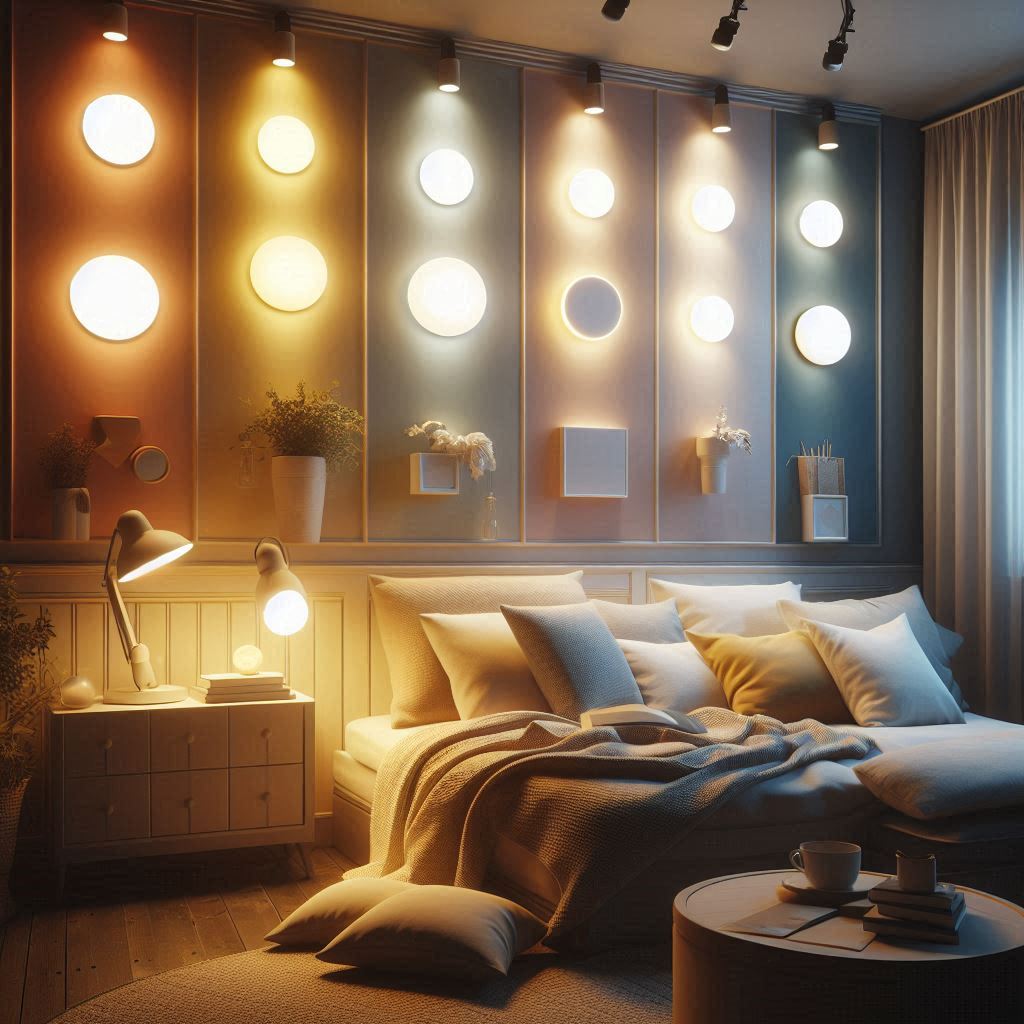Introduction
When it comes to lighting design, one often overlooked yet crucial element is the color temperature of the lights. Color temperature, measured in Kelvin (K), affects not only the aesthetic of a room but also the ambiance and functionality. In this blog, we’ll explore the use of wall lights with different color temperatures in the same room, discussing the benefits, design considerations, and whether it’s a recommended practice.
Understanding Color Temperature
Color temperature ranges from warm to cool:
· Warm Light (2700K – 3000K): Emits a soft, yellowish glow, similar to traditional incandescent bulbs. It creates a cozy, inviting atmosphere, ideal for living rooms and bedrooms.
· Neutral Light (3500K – 4500K): Provides a balanced white light that’s more neutral and less yellow. This is suitable for areas like kitchens and bathrooms where clarity is important.
· Cool Light (5000K – 6500K): Resembles daylight, with a bluish tint. It’s energizing and great for task-oriented spaces like offices and workshops.
Benefits of Using Different Color Temperatures
· Functional Zoning: Using wall lights with different temperatures can effectively zone a room. For instance, a warm light near a reading nook can create a cozy corner, while cooler lights near a workstation can enhance focus and productivity.
· Aesthetic Appeal: Mixing color temperatures can add depth and dimension to a room. It can highlight architectural features or artwork, making the space more dynamic and visually interesting.
· Mood Setting: Different activities require different lighting moods. A combination of warm and cool lights allows you to adjust the ambiance to suit your needs—warm for relaxation and cool for activities that require concentration.
Design Considerations
· Balance and Harmony: When mixing color temperatures, it’s crucial to maintain a balance. Too many contrasting temperatures can create a chaotic look. Aim for a harmonious blend that complements the room’s decor and purpose.
· Lighting Control: Incorporating dimmers and smart lighting controls can help manage the different light temperatures effectively. This allows for easy adjustments based on the time of day or activity.
· Fixture Placement: Strategic placement of wall lights is key. For example, warm lights might be best suited for areas where you relax, such as near sofas or beds, while cooler lights can be placed where tasks are performed, like above desks or kitchen counters.
Is It Recommended?
While using wall lights with different color temperatures in the same room can offer several benefits, it’s not always recommended for every space. It depends on the room’s function and the desired atmosphere. Here are some considerations:
Yes, if:
· You want to create distinct zones within a single room.
· The room serves multiple purposes, requiring varied lighting.
· You enjoy a dynamic and layered lighting scheme.
No, if:
· The room is small and could become visually cluttered with mixed temperatures.
· You prefer a uniform, cohesive look with consistent lighting.
· You’re unsure how to balance different temperatures effectively.
Conclusion
Incorporating wall lights with varying color temperatures in the same room can enhance functionality, aesthetic appeal, and mood setting. However, it requires careful planning and consideration of the room’s overall design and purpose. If done thoughtfully, it can transform a space into a versatile and visually engaging environment.
Experiment with different combinations, and don’t hesitate to consult a lighting designer to achieve the perfect balance. Remember, the right lighting can make all the difference in creating a room that’s not only beautiful but also perfectly suited to your lifestyle.

